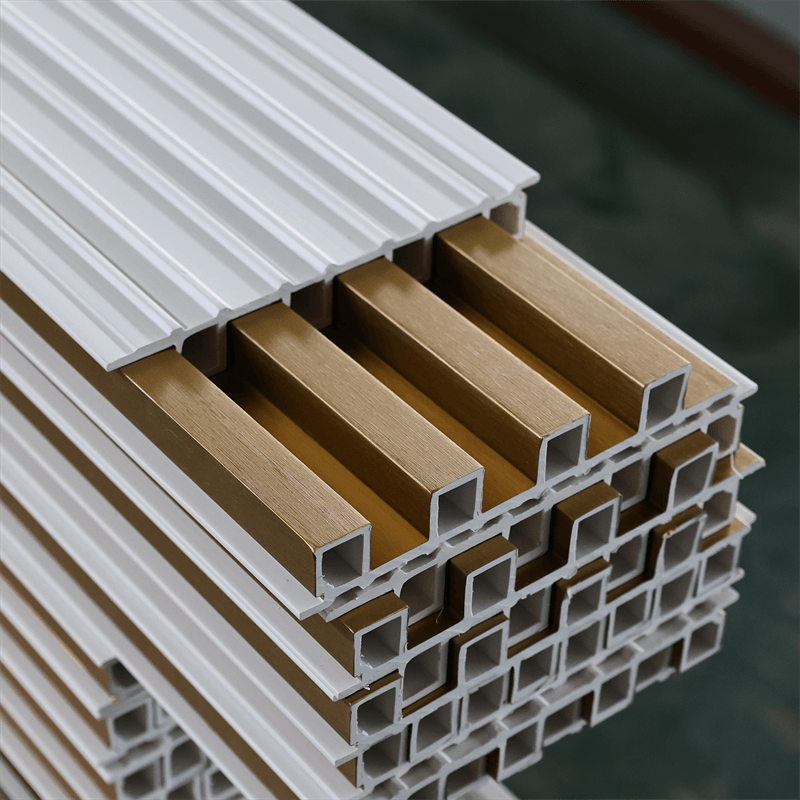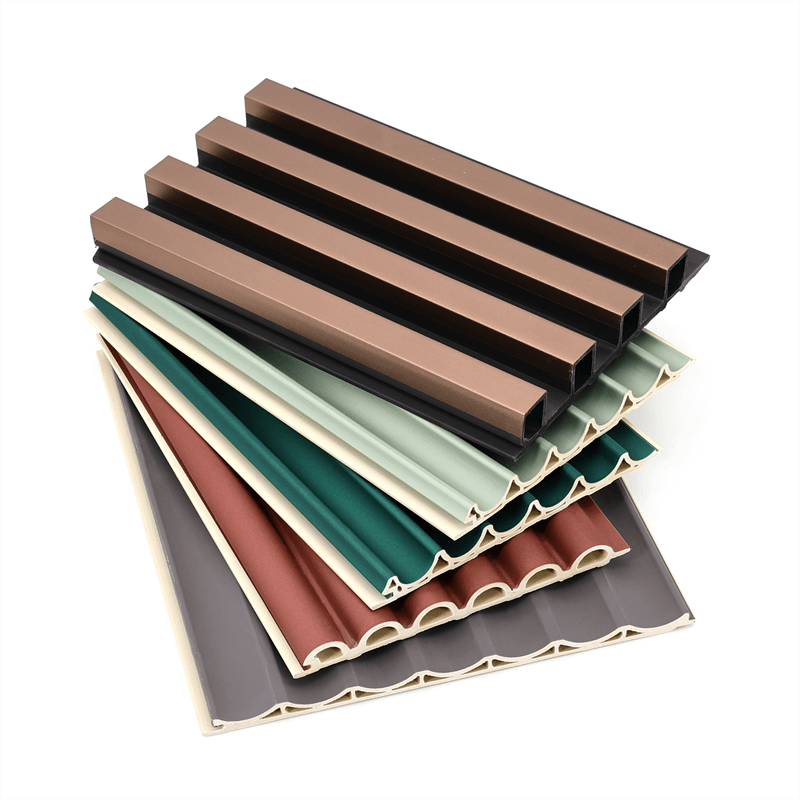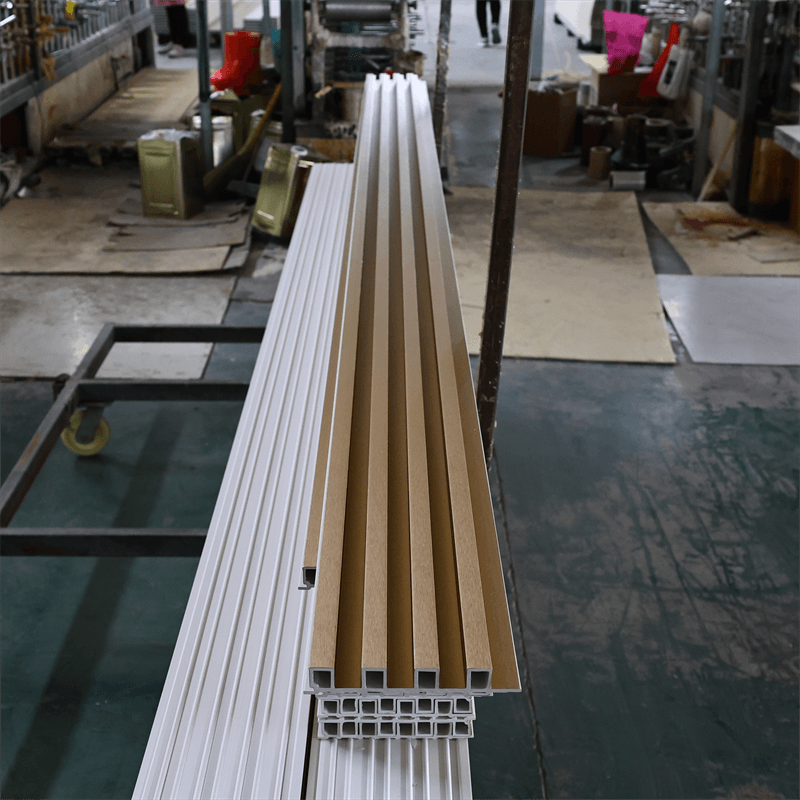The construction industry has a significant impact on the environment, and as global awareness of sustainability grows, there is an increasing demand for eco-friendly building materials.
One such solution that has gained prominence in recent years is the use of WPC (Wood-Plastic Composite) wall panels.
These panels offer a sustainable alternative to traditional wall coverings, combining the natural beauty of wood with the durability and environmental benefits of recycled plastics.
This essay explores the use of WPC wall panels as a sustainable building solution, discussing their composition, advantages, applications, and contribution to a greener future.
I. Understanding WPC Wall Panels:
WPC wall panels are composed of a combination of wood fibers obtained from sustainable sources and recycled thermoplastics, typically polyethylene or polyvinyl chloride (PVC).
This composition creates a material that replicates the look and feel of wood while harnessing the benefits of plastic.
The wood fibers provide the panels with natural aesthetics, texture, and strength, while the thermoplastics enhance their durability, moisture resistance, and longevity.
II. Advantages of WPC Wall Panels:
- Environmental Sustainability: WPC wall panels offer a sustainable alternative to conventional materials. By incorporating wood fibers from responsibly managed forests and utilizing recycled plastics, these panels help reduce the demand for virgin timber and divert plastic waste from landfills. By choosing WPC wall panels, builders and homeowners can contribute to the conservation of natural resources and the reduction of carbon emissions associated with traditional building materials.
- Durability and Longevity: WPC wall panels are highly durable, outperforming traditional materials like wood or gypsum board in terms of resistance to rot, termites, and weathering. They do not warp, crack, or splinter like natural wood and can withstand the test of time. This longevity reduces the need for frequent replacements, thereby minimizing waste generation and extending the lifespan of buildings.
- Moisture Resistance: Unlike natural wood, which is susceptible to damage from moisture and humidity, WPC wall panels exhibit exceptional moisture resistance. The incorporation of thermoplastics prevents water absorption, making them suitable for installation in moisture-prone areas such as bathrooms, kitchens, or basements. This moisture resistance also contributes to the prevention of mold growth, ensuring a healthier indoor environment.
- Low Maintenance: WPC wall panels require minimal maintenance compared to traditional materials. They do not require painting or sealing, and their smooth surface can be easily cleaned with a damp cloth or mild detergent. This low-maintenance characteristic reduces the need for harsh chemicals, water usage, and labor, resulting in long-term cost savings and a reduced environmental impact.
III. Applications of WPC Wall Panels:
- Residential Buildings: WPC wall panels are increasingly used in residential construction and renovation projects. They can be installed as interior wall coverings, creating visually appealing and eco-friendly living spaces. Whether used as accent walls or for complete room coverage, these panels offer a wide range of design options to suit different interior styles and preferences.
- Commercial and Public Spaces: WPC wall panels find extensive applications in commercial buildings, including hotels, restaurants, offices, and retail stores. The panels can be used to enhance the aesthetics of lobbies, reception areas, and corridors, contributing to a welcoming and sustainable environment. Additionally, their durability and resistance to wear make them suitable for high-traffic areas, ensuring their longevity in bustling commercial spaces.
- Educational Institutions: WPC wall panels are ideal for educational institutions, where sustainability and durability are paramount. These panels can be used to create vibrant and inspiring learning environments while minimizing the environmental impact. Furthermore, the low maintenance requirements of WPC panels make them a practical choice for schools and universities, reducing operational costs and ensuring a sustainable infrastructure.
- Exterior Applications: While primarily used for interior design, WPC wall panels can also be employed in exterior applications. Their resistance to moisture, UV rays, and temperature variations allows them to withstand outdoor conditions. By using WPC panels for exterior cladding or fencing, builders can create a cohesive design that combines aesthetics with sustainability.
IV. Contribution to a Greener Future:
The use of WPC wall panels as an eco-friendly building solution has significant implications for a greener future.
By choosing these panels, builders and homeowners can reduce the environmental footprint of their projects.
The incorporation of recycled materials reduces the demand for virgin resources, preserving natural habitats and biodiversity.
Moreover, the durability and longevity of WPC panels reduce waste generation and the need for frequent replacements, contributing to a more sustainable construction industry.
Additionally, the production of WPC wall panels typically involves less energy consumption and carbon emissions compared to traditional materials.
The use of recycled plastics helps divert plastic waste from landfills, addressing the global challenge of plastic pollution.
Furthermore, the sustainable sourcing of wood fibers supports responsible forestry practices, promoting the conservation of forests and the ecosystem services they provide.
WPC wall panels offer a sustainable building solution that combines the beauty of wood with the durability and environmental benefits of recycled plastics.
Their composition, advantages, and applications make them an eco-friendly choice for interior and exterior design projects.
By using WPC panels, builders and homeowners can contribute to a greener future by reducing the demand for virgin resources, diverting plastic waste, and minimizing the environmental impact of construction.
As sustainability becomes increasingly important in the construction industry, the use of WPC wall panels stands as a testament to the possibilities of creating beautiful, functional, and eco-friendly spaces.

In conclusion, WPC wall panels have emerged as a sustainable building solution that addresses the environmental challenges faced by the construction industry.
Their composition, advantages, and applications make them a compelling choice for builders, architects, and homeowners seeking eco-friendly alternatives to traditional wall coverings.
The use of WPC wall panels contributes to a greener future by reducing the demand for virgin resources, diverting plastic waste from landfills, and minimizing the carbon footprint of construction projects.
The incorporation of wood fibers from responsibly managed forests supports sustainable forestry practices and helps preserve natural habitats.
Simultaneously, the utilization of recycled plastics addresses the pressing issue of plastic pollution, promoting a circular economy and reducing waste.
Furthermore, the durability, moisture resistance, and low maintenance requirements of WPC panels contribute to the long-term sustainability of buildings.
By choosing these panels, builders can create structures that withstand the test of time, minimizing the need for frequent replacements and reducing waste generation.
The versatility of WPC wall panels allows for their application in various settings, including residential, commercial, and educational buildings.
From creating aesthetically pleasing interiors to enhancing the durability and visual appeal of exteriors, these panels offer design flexibility without compromising sustainability.
As the demand for sustainable building solutions continues to grow, WPC wall panels stand as a testament to the possibilities of creating eco-friendly spaces.
Their use not only addresses environmental concerns but also provides an opportunity for builders and homeowners to make a positive impact on the planet.
In conclusion, WPC wall panels offer a sustainable alternative to traditional wall coverings, combining the natural beauty of wood with the environmental benefits of recycled plastics.
By embracing these panels, we can contribute to a greener future, where buildings are not only visually appealing but also environmentally responsible.
It is through the adoption of such eco-friendly solutions that we can create a more sustainable construction industry and leave a positive legacy for future generations.


